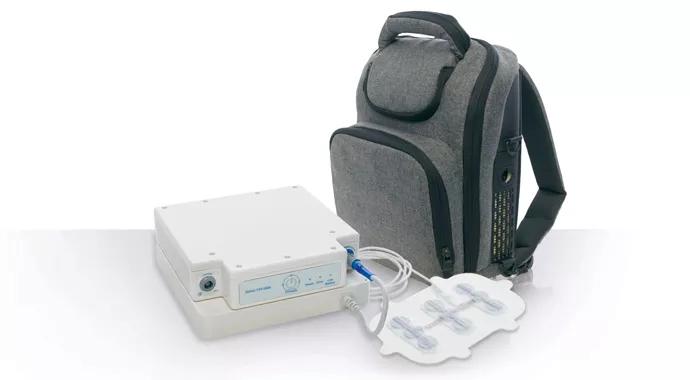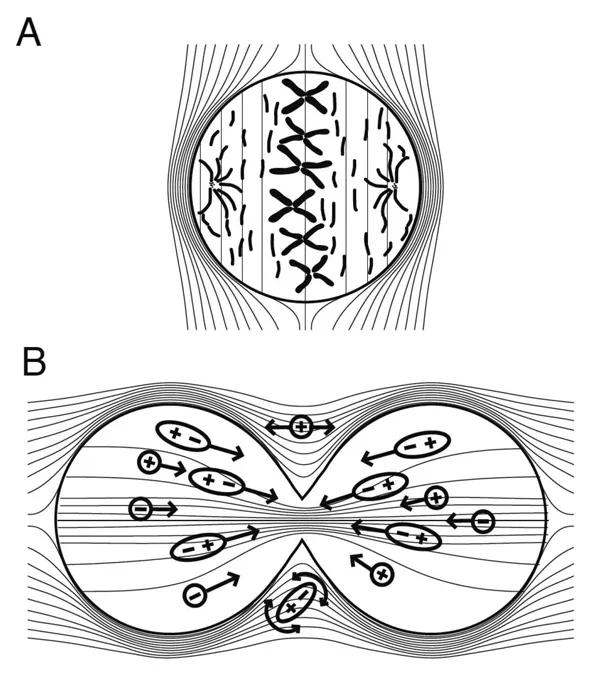Advertisement
Trials examine low-intensity electricity’s effect on recurrent glioblastoma

By Manmeet Ahluwalia, MD, FACP
Advertisement
Cleveland Clinic is a non-profit academic medical center. Advertising on our site helps support our mission. We do not endorse non-Cleveland Clinic products or services. Policy
Despite advances in surgery, radiation therapy and chemotherapy, glioblastoma remains an incurable malignancy with a dismal median overall survival of 15 to 18 months. Preclinical studies have shown that when properly tuned, very-low-intensity, intermediate-frequency electric fields — tumor treating fields (TTFields) — can inhibit the growth of tumor cells. Cleveland Clinic’s Rose Ella Burkhardt Brain Tumor and Neuro-Oncology Center is taking a leading role in studying and using this emerging field of therapy.
In the laboratory setting and clinical practice, electric fields show a wide range of effects on living tissues. At very low frequencies (< 1 kHz), electric fields stimulate excitable tissues through membrane depolarization. Well-known examples of such effects include nerve, muscle and heart stimulation by electric fields. In addition, low-frequency pulsed electric fields have been claimed to stimulate bone growth and accelerate fracture healing. However, as the frequency of the electric field increases above 1 kHz, the stimulatory effect diminishes.
At very high frequencies (i.e., above many MHz), while the integration becomes even more effective, a completely different biological effect is observed: Tissue heating becomes dominant due to dielectric losses. This phenomenon is the basis for commonly used medical treatment modalities, including diathermy and radiofrequency tumor ablation, which can be applied through insulated electrodes.
Intermediate-frequency electric fields (i.e., tens of kHz to MHz) alternate too fast to cause nerve-muscle stimulation and involve only minute dielectric losses (heating). Such fields, of low to moderate intensities, are commonly considered to have no biological effect. However, a number of nonthermal effects, of minor biological consequence, have been reported even at low field intensities. These effects include microscopic particle alignment (i.e., the pearl chain effect) and cell rotation. With pulsed relatively strong electric fields (> 103 V/cm and 100-ms pulse length), reversible pore formation appears in the cell membrane, a phenomenon usually called electroporation.
Biological molecules are dipoles (composed of positive and negative charges), and dipole movement can occur with application of an external electric field. In situations where biological processes require precise spatial alignment, such as mitosis, externally applied electric fields can disrupt this process. This was the hypothesis that led to the initial work evaluating the ability of electric fields to disrupt mitosis in cancer cells.
In laboratory studies, TTFields have demonstrated an inhibitory effect in all proliferating cancer cell types tested but had no effect on nonproliferating cells and normal tissues. Interestingly, different cell types showed specific intensity and frequency dependencies of TTField inhibition.
Two main processes occur at the cellular level during exposure to TTFields: arrest of proliferation and dividing cell destruction. The damage caused by TTFields to these replicating cells was dependent on the orientation of the division process in relation to the field vectors, indicating that this effect is nonthermal.
At the subcellular level it was found that TTFields disrupt the normal polymerization-depolymerization process of microtubules during mitosis.

(Figure 1. Mechanism of action of tumor treating fields therapy.
(A) Disruption of the formation of the mitotic spindle in metaphase.
(B) Positive dielectrophoresis during anaphase.
Reprinted with permission from Gutin PH, Wong ET, “Noninvasive Application of Alternating Electric Fields in Glioblastoma: A Fourth Cancer Treatment Modality.” In ASCO 2012 Educational Book. American Society of Clinical Oncology; 2012:128. © American Society of Clinical Oncology. All rights reserved.)
Advertisement
The described abnormal mitotic configurations seen after exposure to TTFields are similar to the morphological abnormalities seen in cells treated with agents that interfere directly or indirectly with microtubule polymerization (e.g., paclitaxel).
The NovoTTF-100A System (Novocure; Haifa, Israel) is a portable battery-operated device that produces TTFields within the human body using surface electrodes (transducer arrays).
(Figure 2. The NovoTTF-100A device delivers TTFields by electrically insulated surface transducer arrays placed on the patient’s shaved head.)

The TTFields are delivered to the patient by surface transducer arrays that are electrically insulated so that resistively coupled electric currents are not delivered to the patient. The transducer arrays, which incorporate a layer of adhesive hydrogel and a layer of hypoallergenic medical tape, are placed on the patient’s shaved head. The arrays must be replaced every three to four days and the scalp reshaved to maintain optimal capacitative coupling between the arrays and the patient’s head.
All treatment parameters are preset by the manufacturer so there are no electrical output adjustments available to the patient. The patient must learn to apply and change transducer arrays, change and recharge depleted device batteries, and connect to an external electrical outlet.
Advertisement
A prospective, randomized, open-label trial with active parallel control was conducted to compare effectiveness and safety outcomes between patients with recurrent glioblastoma treated with NovoTTF-100A monotherapy (n = 120) and those treated with an effective best-standard-of-care chemotherapy (n = 117). NovoTTF-100A patients had comparable overall survival to patients receiving the best available chemotherapy in the U.S. today. Patients randomized to the device demonstrated fewer side effects and improved quality of life measures relative to the chemotherapy group. This led to U.S. marketing approval of the device in 2011 for use as monotherapy for patients with recurrent glioblastoma.
Cleveland Clinic participated in this study, and physicians in our Rose Ella Burkhardt Brain Tumor and Neuro-Oncology Center were among the first in the United States to prescribe the device for patients with recurrent glioblastoma.
The Burkhardt Center is leading an ongoing multicenter study evaluating the efficacy of the NovoTTF-100A device in combination with bevacizumab, an FDA-approved therapy for patients with recurrent glioblastoma. Cleveland Clinic investigators are also leading a planned large international trial of the combination of NovoTTF-100A with bevacizumab for patients with recurrent glioblastoma that has failed to respond to bevacizumab alone. We look forward to the results from each of these investigations.
Dr. Ahluwalia is Associate Director, Clinical Trials, Operations, as well as Section Head of Neuro-Oncology Outcomes in Cleveland Clinic’s Rose Ella Burkhardt Brain Tumor and Neuro-Oncology Center.
Reprinted with permission. © 2010 American Society of Clinical Oncology. All rights reserved. Photo courtesy of Novocure.
Advertisement
Advertisement

Polygenic risk score could help predict who will develop this aggressive breast cancer

Platinum-eligible phase 3 trial of enfortumab vedotin and pembrolizumab yields ‘unprecedented data’

Extent of baseline burden impacts progression-free and overall survival

Further study warranted to better understand the clinical implications of these findings

Real-world study shows high response rates that are durable with commercial lisocabtagene maraleucel

Oral anticoagulants may be beneficial but need to be balanced against bleeding risks

First-of-its-kind research investigates the viability of standard screening to reduce the burden of late-stage cancer diagnoses

Study demonstrates ability to reduce patients’ reliance on phlebotomies to stabilize hematocrit levels